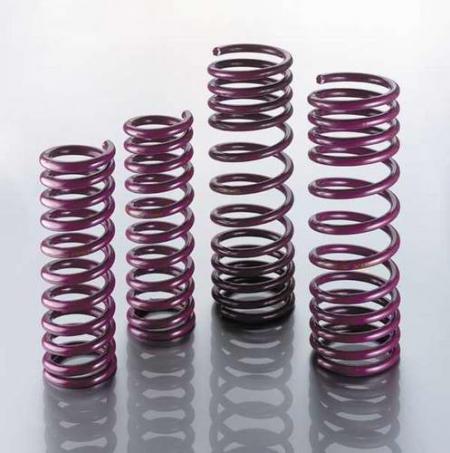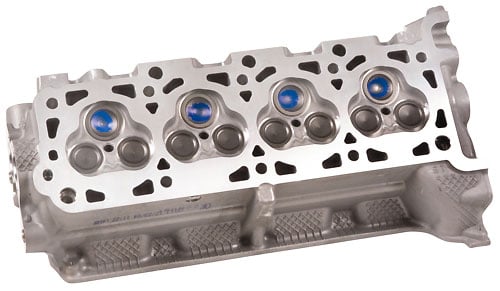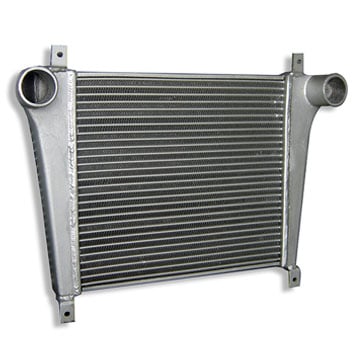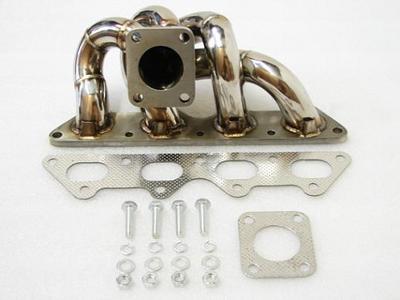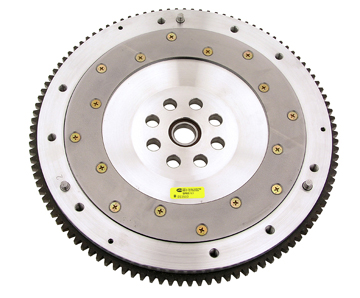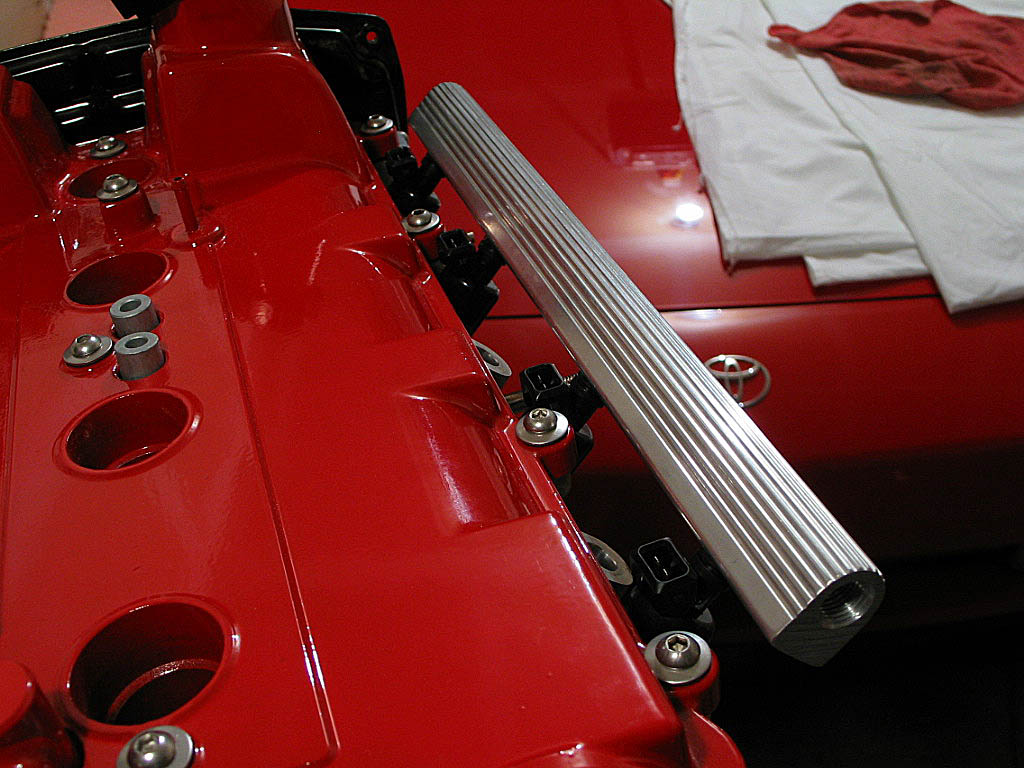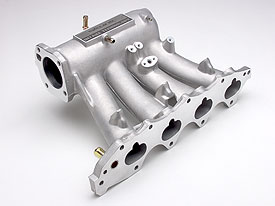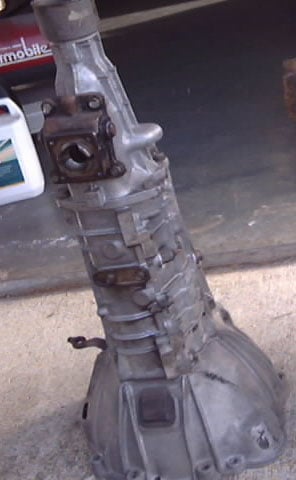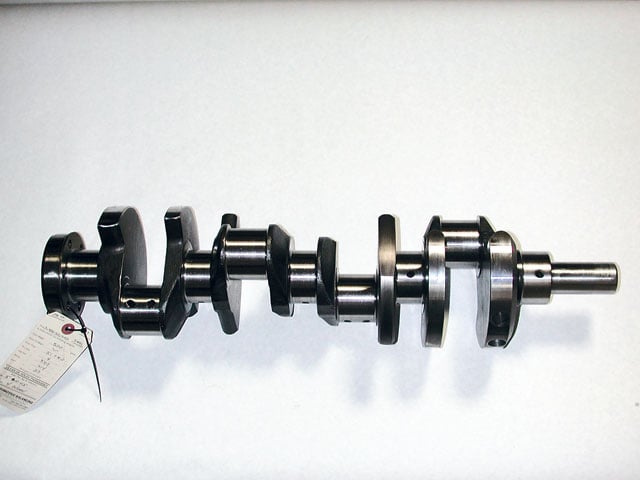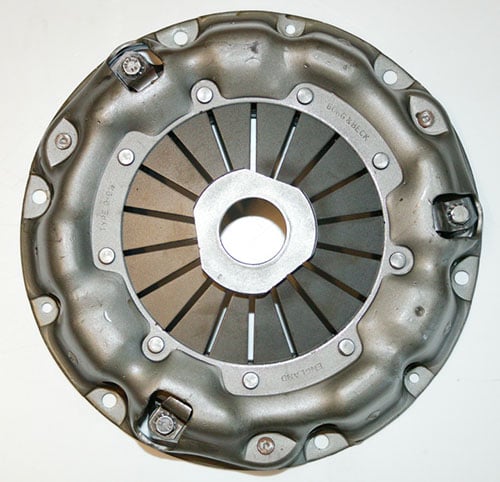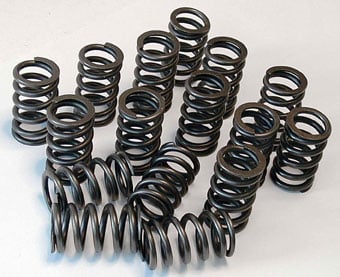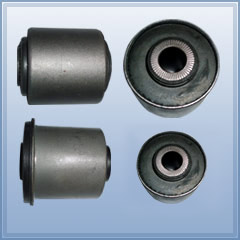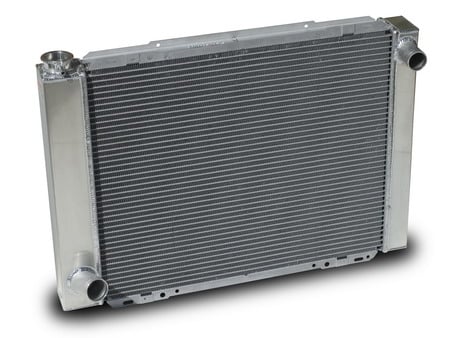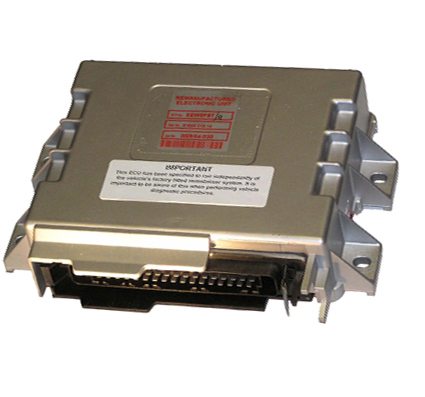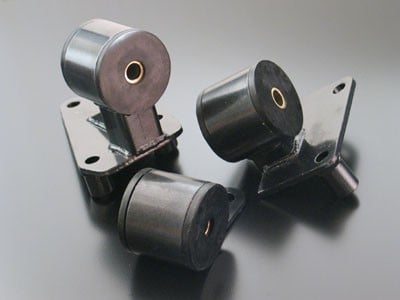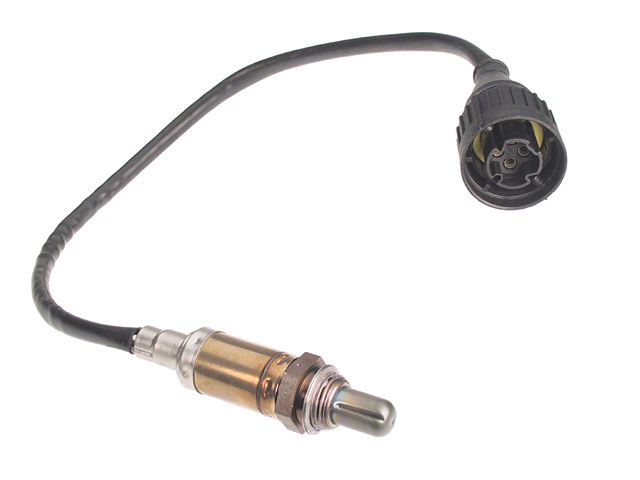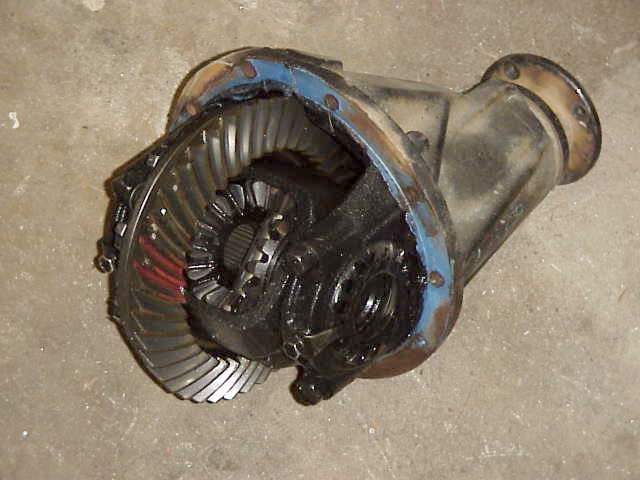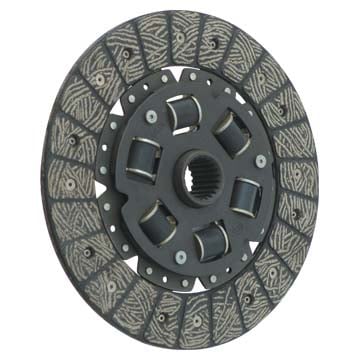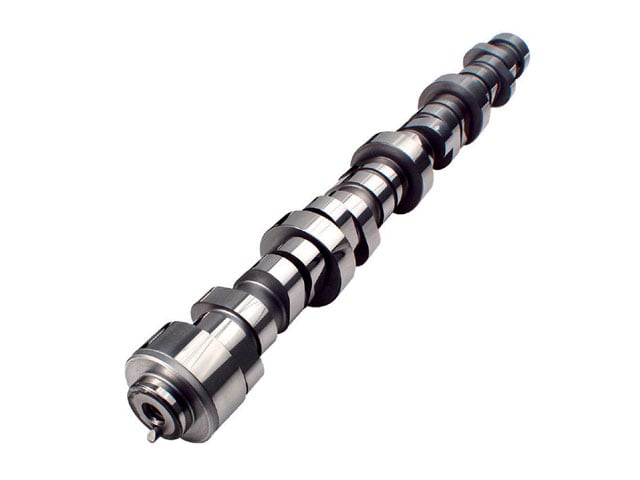Car Parts, Reading Test
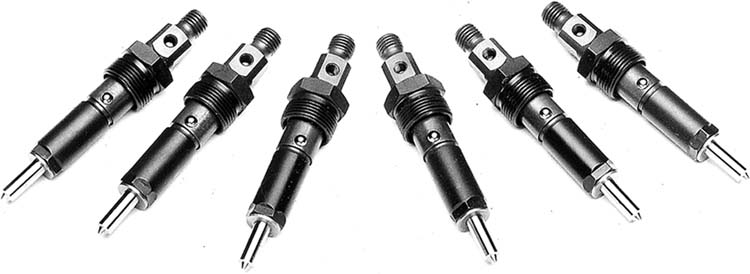
- 1.
- A.
Spark Plugs
- B.
Knock Sensors
- C.
Injectors
Correct Answer
C. Injectors -
- 2.
- A.
Value Springs
- B.
Suspension Springs
- C.
Coil Overs
Correct Answer
B. Suspension Springs -
- 3.
- A.
Cylinder Head
- B.
Short Engine
- C.
Value Cover
Correct Answer
A. Cylinder Head -
- 4.
- A.
Radiator
- B.
Performance Air Filter
- C.
Intercooler
Correct Answer
C. Intercooler -
- 5.
- A.
Naturally aspirated exhaust manifold
- B.
Turbo exhaust manifold
- C.
Performance Intake Manifold
Correct Answer
B. Turbo exhaust manifold -
- 6.
- A.
Clutch Plate
- B.
Flywheel
- C.
Pressure Plate
Correct Answer
B. Flywheel -
- 7.
With this picture we can tell the car is.........
- A.
NOS Injector-ed
- B.
Fuel Injector-ed
- C.
MultiPoint Fuel Injector-ed
Correct Answer
C. MultiPoint Fuel Injector-edExplanation
Based on the given options and the picture, we can determine that the car is equipped with a MultiPoint Fuel Injector. This type of fuel injection system uses multiple injectors to deliver fuel to each individual cylinder, resulting in better fuel atomization and more efficient combustion.Rate this question:
-
- 8.
- A.
Turbo Exhaust Manifold
- B.
Performance Intake Manifold
- C.
Naturally aspirated Exhaust Manifold
Correct Answer
B. Performance Intake Manifold -
- 9.
- A.
Oil Filter
- B.
Fuel Filter
- C.
Fuel Pump
Correct Answer
B. Fuel Filter -
- 10.
- A.
RWD Gear Box
- B.
4WD Gear Box
- C.
FWD Gear Box
Correct Answer
A. RWD Gear Box -
- 11.
- A.
Brake Disc Rotor
- B.
Flywheel
- C.
Clutch Plate
Correct Answer
A. Brake Disc Rotor -
- 12.
- A.
Cam Shaft
- B.
Crank Shaft
- C.
Propeller Shaft
Correct Answer
B. Crank Shaft -
- 13.
- A.
Clutch Disc
- B.
Pressure Plate
- C.
Flywheel
Correct Answer
B. Pressure Plate -
- 14.
- A.
Suspension Springs
- B.
Clutch Springs
- C.
Valve Springs
Correct Answer
C. Valve Springs -
- 15.
- A.
Suspension Bushes
- B.
Sealed Bearings
- C.
Unsealed Bearings
Correct Answer
A. Suspension Bushes -
- 16.
- A.
Intercooler
- B.
Radiator
- C.
Air Filter
Correct Answer
B. Radiator -
- 17.
- A.
CD / DVD Stacker
- B.
Central Locking Unit
- C.
Electronic Control Unit
Correct Answer
C. Electronic Control Unit -
- 18.
- A.
Engine Mounts
- B.
Suspension Bushes
- C.
Suspension Arms
Correct Answer
A. Engine Mounts -
- 19.
- A.
Oxygen Sensor
- B.
Thermostat
- C.
Air Flow Meter
Correct Answer
A. Oxygen Sensor -
- 20.
- A.
Gear Box
- B.
Differential
- C.
4WD Transfer Case
Correct Answer
B. Differential -
- 21.
- A.
Pressure Plate
- B.
Flywheel
- C.
Clutch Disc
Correct Answer
C. Clutch Disc -
- 22.
- A.
Turbo Charger
- B.
Alternator
- C.
Super Charger
Correct Answer
A. Turbo Charger -
- 23.
- A.
Crank Shaft
- B.
Cam Shaft
- C.
Bump Rail
Correct Answer
B. Cam Shaft -
- 24.
All brake systems use _________ to stop the car.
- A.
Hydraulic fluid
- B.
Friction
- C.
Kinetic energy
- D.
Potential energy
- E.
Disc brakes
Correct Answer
B. FrictionExplanation
Brake systems rely on friction to stop the car. When the brakes are applied, the brake pads create friction against the rotating discs or drums, converting the kinetic energy of the moving car into heat energy. This frictional force slows down and eventually stops the car. Therefore, friction is an essential component of all brake systems.Rate this question:
-
- 25.
The part of the brake that applies the pressure against the drum is called a
- A.
Boot
- B.
Thong
- C.
Flipper
- D.
Shoe
- E.
Regulator
Correct Answer
D. ShoeExplanation
The part of the brake that applies pressure against the drum is called a "shoe". This is because the brake shoe is a curved piece of metal or composite material that is lined with friction material. When the brakes are applied, the shoe is pressed against the inside of the drum, creating friction and causing the vehicle to slow down or stop. The term "shoe" is commonly used in the automotive industry to refer to this specific component of the brake system.Rate this question:
-
- 26.
What auto system allows cars to automatically go over bumps and potholes and absorb shock without bumping the driver around?
- A.
Cooling
- B.
Steering
- C.
Suspension
- D.
Brake
- E.
Ignition
Correct Answer
C. SuspensionExplanation
The suspension system in a car allows it to automatically go over bumps and potholes and absorb shock without bumping the driver around. It consists of various components such as springs, shock absorbers, and linkages that work together to provide a smooth and comfortable ride by absorbing the impact of uneven road surfaces.Rate this question:
-
- 27.
What travels from the brake pedal to the brakes to apply the force to stop the car?
- A.
Force
- B.
Friction
- C.
Disc
- D.
Brake fluid
- E.
Hydraulic fluid
Correct Answer
D. Brake fluidExplanation
Brake fluid is responsible for transmitting the force from the brake pedal to the brakes in order to apply the necessary pressure to stop the car. When the brake pedal is pressed, it creates hydraulic pressure in the brake lines, which is then transmitted to the brake calipers or wheel cylinders. This pressure causes the brake pads or shoes to come into contact with the brake discs or drums, creating friction and ultimately stopping the car.Rate this question:
-
- 28.
What critical adjustment is done by the mechanic to ensure the spark is ignighted at the correct time?
- A.
Fuel flow
- B.
Spark size
- C.
Timing
- D.
Top dead center
- E.
Carbuerator
Correct Answer
C. TimingExplanation
The critical adjustment done by the mechanic to ensure the spark is ignited at the correct time is timing. Timing refers to the precise moment at which the spark plug fires in the engine's combustion cycle. It is crucial for the spark to occur at the right time to optimize fuel combustion and engine performance. By adjusting the timing, the mechanic ensures that the spark plug fires at the correct moment, allowing for efficient fuel combustion and optimal engine operation.Rate this question:
-
- 29.
What part keeps contaminants from getting to the combustion chamber?
- A.
Carbeurator
- B.
Fuel injector
- C.
Fuel lines
- D.
Capacitor
- E.
Fuel filter
Correct Answer
E. Fuel filterExplanation
The fuel filter is responsible for keeping contaminants from reaching the combustion chamber in a vehicle. As fuel flows from the fuel tank to the engine, it passes through the fuel filter, which traps and removes dirt, debris, and other impurities. By doing so, the fuel filter ensures that only clean fuel reaches the combustion chamber, preventing potential damage to the engine and ensuring optimal performance.Rate this question:
-
- 30.
What part produces a spark that ignights fuel?
- A.
Voltage regulator
- B.
Spark plug
- C.
Battery
- D.
Capacitor
- E.
None of the above
Correct Answer
B. Spark plugExplanation
The spark plug is responsible for producing a spark that ignites the fuel in an internal combustion engine. It is connected to the ignition system and is positioned in the combustion chamber of the engine. When the spark plug receives an electrical current from the ignition system, it generates a high voltage spark that jumps across the spark plug gap, igniting the fuel-air mixture. This combustion process powers the engine and allows it to run. The other options listed, such as the voltage regulator, battery, and capacitor, are not directly involved in producing the spark that ignites the fuel.Rate this question:
-
- 31.
Welk van de genummerde onderdelen heet in het Engels 'tensioner'?
- A.
Onderdeel 1
- B.
Onderdeel 2
- C.
Onderdeel 3
- D.
Alle onderdelen
Correct Answer
B. Onderdeel 2 -
- 32.
The battery is made of lead, water and
- A.
Paint
- B.
Battery fluid
- C.
Gasoline
- D.
Sulfuric acid
Correct Answer
D. Sulfuric acidExplanation
Sulfuric acid is commonly used in batteries as an electrolyte. It helps to facilitate the chemical reactions that occur within the battery, allowing it to generate and store electrical energy. Sulfuric acid is highly corrosive and can conduct electricity, making it an ideal choice for battery applications. Lead and water are also components of batteries, but they alone cannot provide the necessary chemical reactions and conductivity required for the battery to function effectively. Paint and gasoline are not typically used in battery construction.Rate this question:
-
- 33.
Where does the current go when the key is turned?
- A.
To the battery
- B.
To the starter
- C.
To the brakes
- D.
To the engine
- E.
To the alternater
Correct Answer
B. To the starterExplanation
When the key is turned, the current flows to the starter. The starter is responsible for initiating the engine's combustion process by turning the engine's flywheel. This action allows the engine to start running. Therefore, the current is directed to the starter to facilitate the engine's starting process.Rate this question:
-
- 34.
What part of the electrical system keeps the battery charged?
- A.
The engine
- B.
The brakes
- C.
The alternator
- D.
The battery cables
- E.
The starter
Correct Answer
C. The alternatorExplanation
The alternator is responsible for keeping the battery charged in the electrical system. It converts mechanical energy from the engine into electrical energy, which is then used to charge the battery and power the electrical components of the vehicle. The alternator works by using a belt connected to the engine to rotate a magnet inside a coil of wire, generating an electrical current. This current is then directed to the battery to ensure it stays charged while the vehicle is running.Rate this question:
-
- 35.
This spanner is known as a _________ spanner
- A.
Open end
- B.
Double ring
- C.
Combination
- D.
Crowsfoot
Correct Answer
C. CombinationExplanation
A combination spanner is a type of spanner that has both an open end and a closed end with a ring. This allows it to be used for different types of nuts and bolts, making it versatile and convenient. The term "combination" refers to the combination of the open end and the closed end, making it the correct answer for the given question.Rate this question:
-
Quiz Review Timeline +
Our quizzes are rigorously reviewed, monitored and continuously updated by our expert board to maintain accuracy, relevance, and timeliness.
-
Current Version
-
Mar 20, 2023Quiz Edited by
ProProfs Editorial Team -
Jan 09, 2014Quiz Created by
Meverling
 Back to top
Back to top



